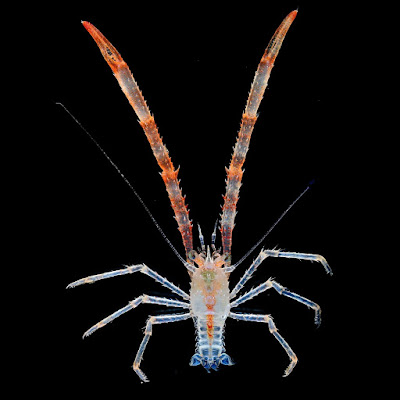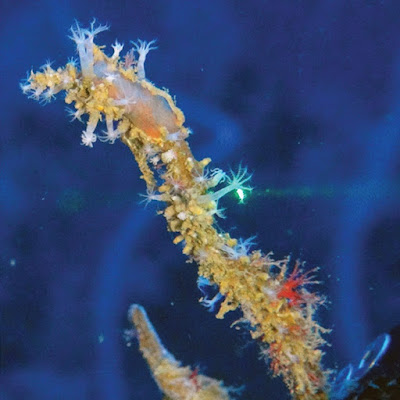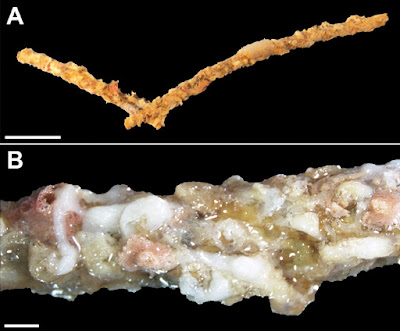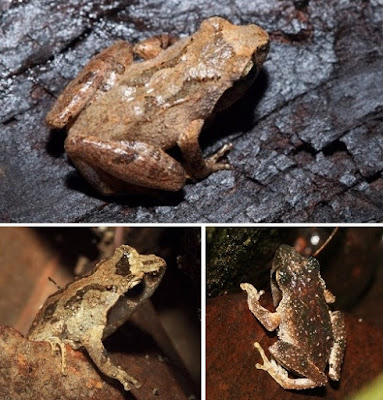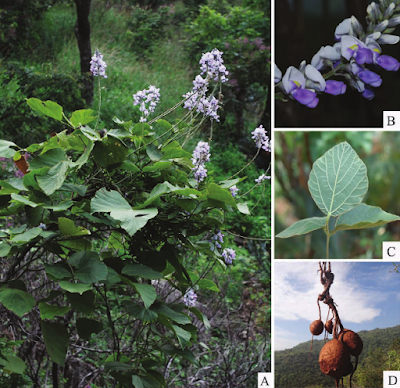 |
| Daliansaurus liaoningensis Shen, Lü, Liu, Kundrát, Brusatte & Gao, 2017 |
Abstract
A new troodontid dinosaur, Daliansaurus liaoningensis gen. et sp. nov., is erected based on a nearly complete specimen from the Lower Cretaceous Yixian Formation of Beipiao City, Liaoning Province, China. This well preserved skeleton provides important new details of the anatomy for Liaoning troodontids, and gives new insight into their phylogenetic relationships and evolution. Daliansaurus is distinguished from other troodontids by an enlarged ungual on pedal digit IV, which is approximately the same size as the sickle-shaped second ungual, and is differentiated from other Liaoning troodontids by a number of characters of the skull, manus, pelvis, and hindlimb. A phylogenetic analysis recovers Daliansaurus within a subclade of Liaoning troodontids that also includes Sinovenator, Sinusonasus, and Mei. We erect a name for this group — Sinovenatorinae — and argue that it reflects a localized radiation of small-bodied troodontids in the Early Cretaceous of eastern Asia, similar to previously recognized radiations of Liaoning dromaeosaurids and avialans. As more Liaoning theropods are discovered, it is becoming apparent that small, feathered paravians were particularly diverse during the Early Cretaceous, and future work is needed to clarify how this diversity arose, which species coexisted, and how these numerous species partitioned niches.
Key words: Troodontids, Daliansaurus liaoningensis, Early Cretaceous, Yixian Formation, Liaoning
Theropoda Marsh, 1881
Maniraptora Gauthier, 1986
Troodontidae Gilmore, 1924
Sinovenatorinae subfamily nov.
Definition: The most inclusive clade including Sinovenator changii but not Troodon formosus, Saurornithoides mongoliensis, Anchiornis huxleyi, Archaeopteryx lithographica, Gallus gallus, Unenlagia comahuensis, or Dromaeosaurus albertensis.
Diagnosis: Based on our phylogenetic analysis, this clade can be diagnosed with the following combination of characters (for further discussion, see below): a premaxilla whose anteroposterior length is less than 10% of the length of the maxilla along the ventral margin of the upper jaw; a premaxillary maxillary process that contacts the nasal ventral to the external naris; some maxillary and dentary teeth that lack serrations on the mesial carina; unfused zygapophyses on the sacral vertebrae; an antitrochanter that is posterodorsal to the acetabulum; and a metatarsal IV that is mediolaterally wide and flattened in cross section.
Included species: Based on our phylogenetic analysis, this clade currently includes Sinovenator changii, Sinusonasus magnodens, Mei long, and Daliansaurus liaoningensis gen. et sp. nov.
Daliansaurus liaoningensis gen. et sp. nov.
Etymology: The generic name refers to the city of Dalian in the south of Liaoning province. The specific name “liaoningensis” refers to the province in which the specimen was discovered.
Locality and horizon: Lujiatun, Beipiao City, Liaoning Province; Yixian Formation, Lower Cretaceous.
 |
| Fig. 15. The living scene of Daliansaurus liaoningensis gen. et sp. nov. (DNHM D 2885) (drawn by Zhao Chuang) |
Conclusions
It appears that small-bodied, feathered, winged paravian theropods from Liaoning—dromaeosaurids, avialans, and troodontids—were exceptionally diverse. Each group experienced its own local Early Cretaceous diversification, which produced a number of species that either coexisted or, perhaps more likely, replaced each other over time or partitioned niches and geographic ranges so that they did not extensively overlap in space. The discovery of Daliansaurus also demonstrates that Liaoning continues to produce new dinosaur taxa, and remains one of the world’s most productive sites for understanding paravian evolution, more than two decades after the first feathered dinosaurs were reported.
SHEN Caizhi, LÜ Junchang, LIU Sizhao, Martin KUNDRÁT, Stephen L. BRUSATTE and GAO Hailong. 2017. A New Troodontid Dinosaur from the Lower Cretaceous Yixian Formation of Liaoning Province, China. ACTA GEOLOGICA SINICA. 91(3); 763–780.


